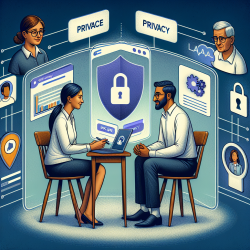In today's fast-paced digital world, e-supervision has become an essential tool for many therapists and supervisors. With the recent study "Comparing Presence and Absence of Initial In-Person Contact and Written Feedback in RE&CBT E-Supervision" published in the Journal of Rational-Emotive and Cognitive-Behavior Therapy, we gain valuable insights into how to enhance the effectiveness of e-supervision. Here, we summarize the key findings and provide actionable tips to help practitioners improve their e-supervision skills.
Key Findings of the Study
The study aimed to assess whether initial in-person contact and written feedback impact the supervisory alliance, satisfaction with e-supervision, and self-disclosure among supervisees. The study involved two groups: one with initial in-person meetings and the other with entirely online interactions. Both groups received written feedback for the first five e-supervision sessions, while the latter five sessions involved only partial reviews without written feedback.
- Supervisory Working Alliance: The results indicated that initial in-person contact did not significantly affect the supervisory working alliance. Both groups scored similarly high, suggesting that a strong working relationship can be built entirely online.
- Satisfaction with Supervision: Satisfaction levels were high across both groups, indicating that the mode of initial contact (in-person vs. online) did not significantly impact overall satisfaction with e-supervision.
- Self-Disclosure: The study found inconsistent patterns in self-disclosure, with no significant differences between the groups. This suggests that factors other than initial in-person contact may influence self-disclosure during e-supervision.
Actionable Tips for Practitioners
Based on the study's findings, here are some practical tips for improving your e-supervision practices:
- Focus on Building a Strong Working Alliance: Whether your initial contact is in-person or online, prioritize building a robust supervisory working alliance. Use active listening, empathy, and clear communication to establish trust and rapport.
- Provide Comprehensive Written Feedback: Written feedback can be particularly beneficial for novice therapists. It allows supervisees to reflect on their sessions and prepare better for future supervision. Consider incorporating written feedback in your e-supervision model, especially in the early stages.
- Adapt to Individual Needs: Recognize that each supervisee may have different preferences and needs. Tailor your e-supervision approach to accommodate these individual differences, whether through more directive feedback or additional support.
- Leverage Technology Effectively: Use reliable and secure platforms for e-supervision sessions. Ensure that both you and your supervisees are comfortable with the technology to minimize disruptions and maximize the quality of interactions.
Encouraging Further Research
The study highlights the need for more research on e-supervision models and their effectiveness. As practitioners, staying informed about the latest research and developments in e-supervision can help you refine your practices and provide better support to your supervisees.
To read the original research paper, please follow this link: Comparing Presence and Absence of Initial In-Person Contact and Written Feedback in RE&CBT E-Supervision.










